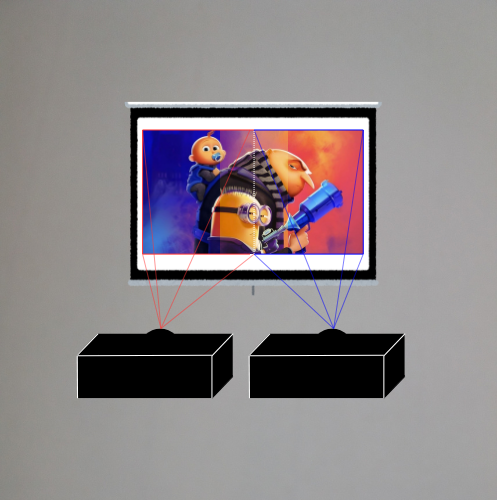Project Overview¶
Wiki | About_Us | Project_Overview | UML_Diagram | Codes
Project Structure¶
In this project, we are provided with two parts of a picture of a blue car. Our task is to demonstrate the integration of two projections to make it appear as a single, continuous image on a flat-screen display. Our group adjusted the gamma correction value and ultimately selected the value where the two parts of the image is blended smoothly. We also combined the luminosity values of two images using the technique "alpha blending" to allow the smooth integration in the overlapping region.
As a result, the output image appears as one picture with no flaws. The overlapping region blends smoothly while the image quality remains high across the display.
Team Structure¶
- Roles
- Leader
- Manager
- Programmer
- Wiki Designer
- UML Designer
- Commentor
Management Methods¶
- Redmine: Employed for comprehensive task management and progress tracking throughout the project lifecycle.
- Doxygen: Utilized for detailed documentation of the codebase to ensure clarity, maintainability, and adaptability.
- Astah: Applied to design and develop Unified Modeling Language (UML) diagrams for a structured representation of the system architecture and workflows.
- Python / OpenCV: Leveraged for implementing advanced image processing techniques, enabling efficient and accurate analysis and manipulation of visual data.
Project Aim¶
Our project aims to create a single, large, seamless image on a flat-screen display using two projectors and two laptops. The projectors are aligned to overlap on the screen, with pictures resized to utilize the full resolution of both devices. We employ techniques such as gamma correction, alpha blending, and intensity modification to enhance image quality and achieve smooth blending in the overlapping region. |
====================================================================================================================================
Technology Overview¶
Alpha Blending¶
Problem and Solution:
The general idea of alpha blending extends from techniques used in movie rendering, or in this case, overlapping projection. The problem with overlapping projection is that the overlapping area is considered as collisions where such conflicts need to be resolved. In the case of computer rendering, the most common method is referred as the painter's method, which would only render one of the overlapping projections. Alpha blending is a proposed solution to would blend both projections. The problem of blending is the stacking luminosity of the two projections. Alpha blending describes the technique to find a alpha coefficient to adjust the luminosity of both projects under the overlapping area. The formula for alpha blending is Value = Value0(1.0 - Alpha) + Value1(Alpha), where Value represents the resulting blended value, combining Value0 and Value1 using the alpha coefficient 𝛼.
Details: |
|
 |
 |
Gamma Correction¶
Problem and Solution:
The general idea of gamma correction is to address the issue that colour blending for computer graphics does not match how a human eye perceives light. In computer graphics, most images are blended using gamma-encoded colours, which are not linear with respect to light intensity. This may lead to "unnatural results” such as being overly dark or washed-out blends. While gamma blending describes the technique of converting colours to a linear colour space for blending operations, allowing these results to appear natural in the human eye. Once the results are blended, it would be converted back to their original gamma-encoded form. The formula for gamma correction is P' = P^Gamma. P' represents the pixel value after gamma correction, and P represents the input value.
Updated by Toma IKUTA 11 months ago · 38 revisions